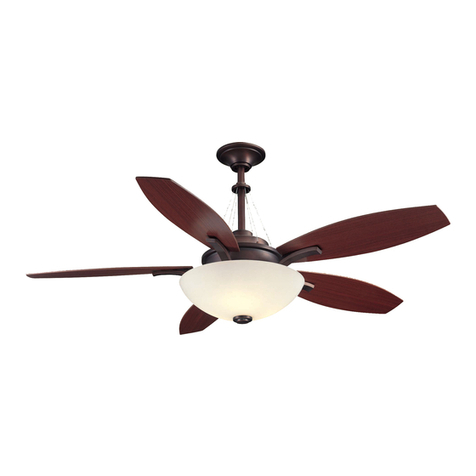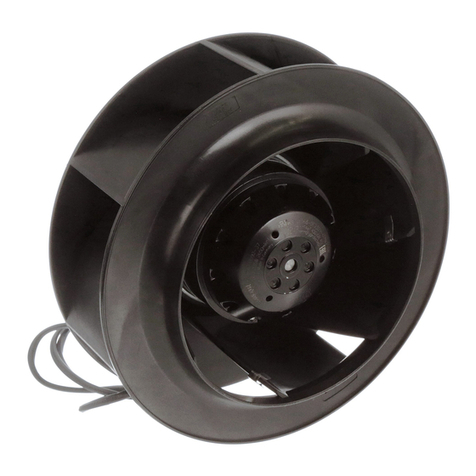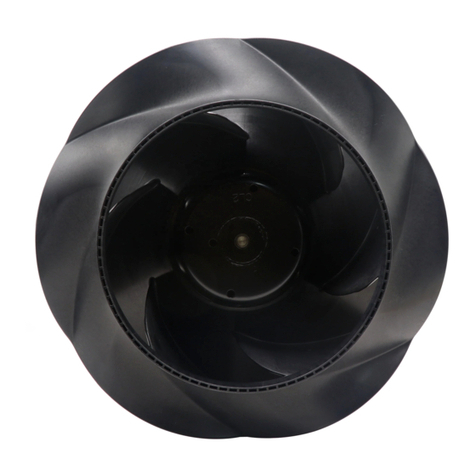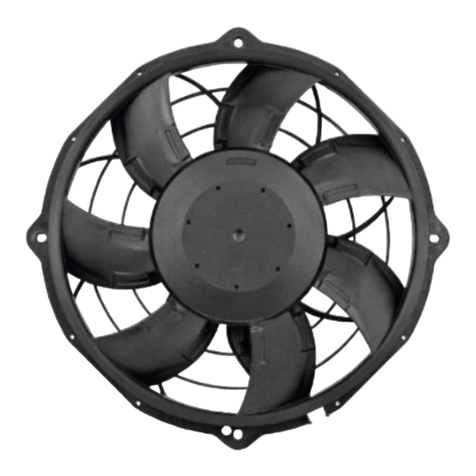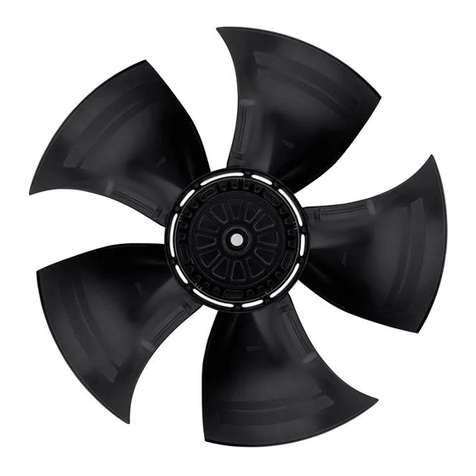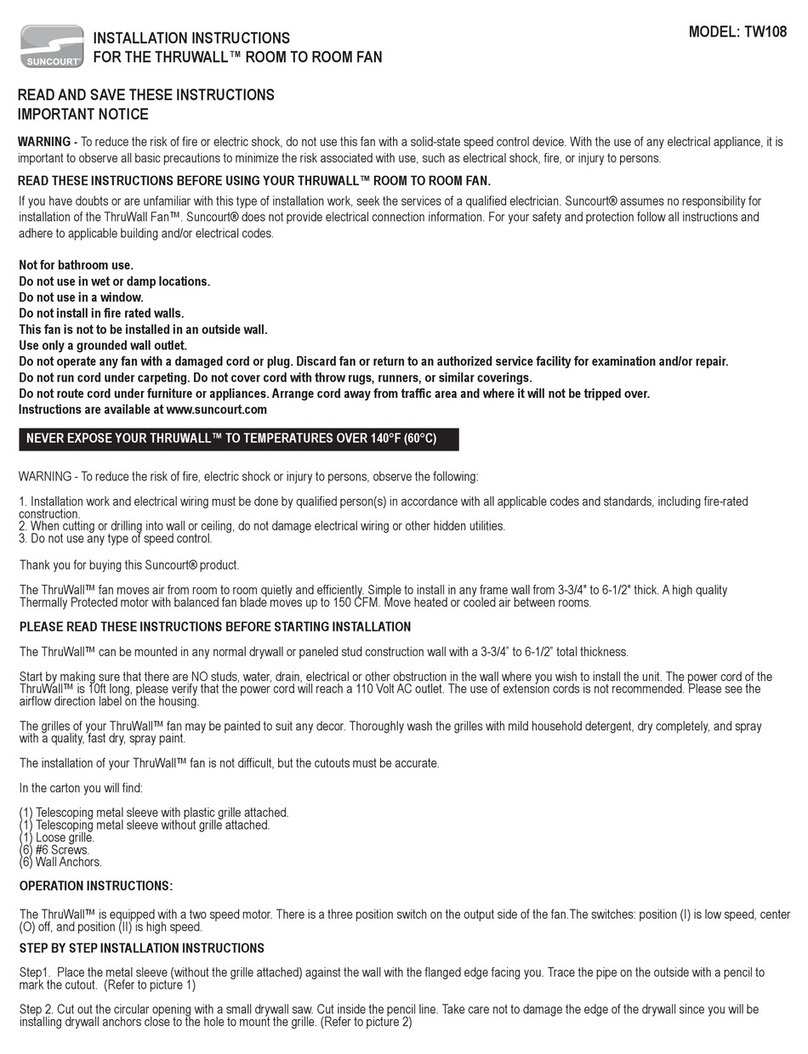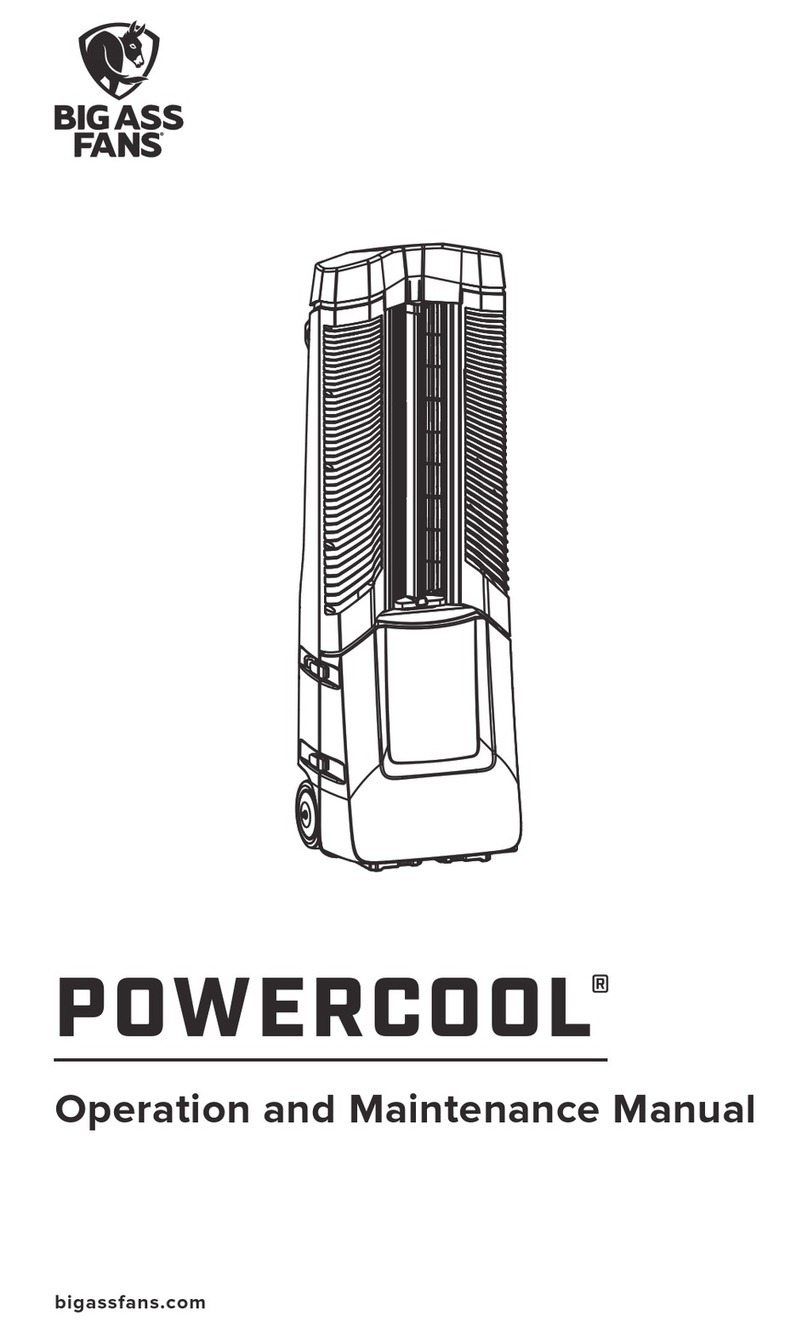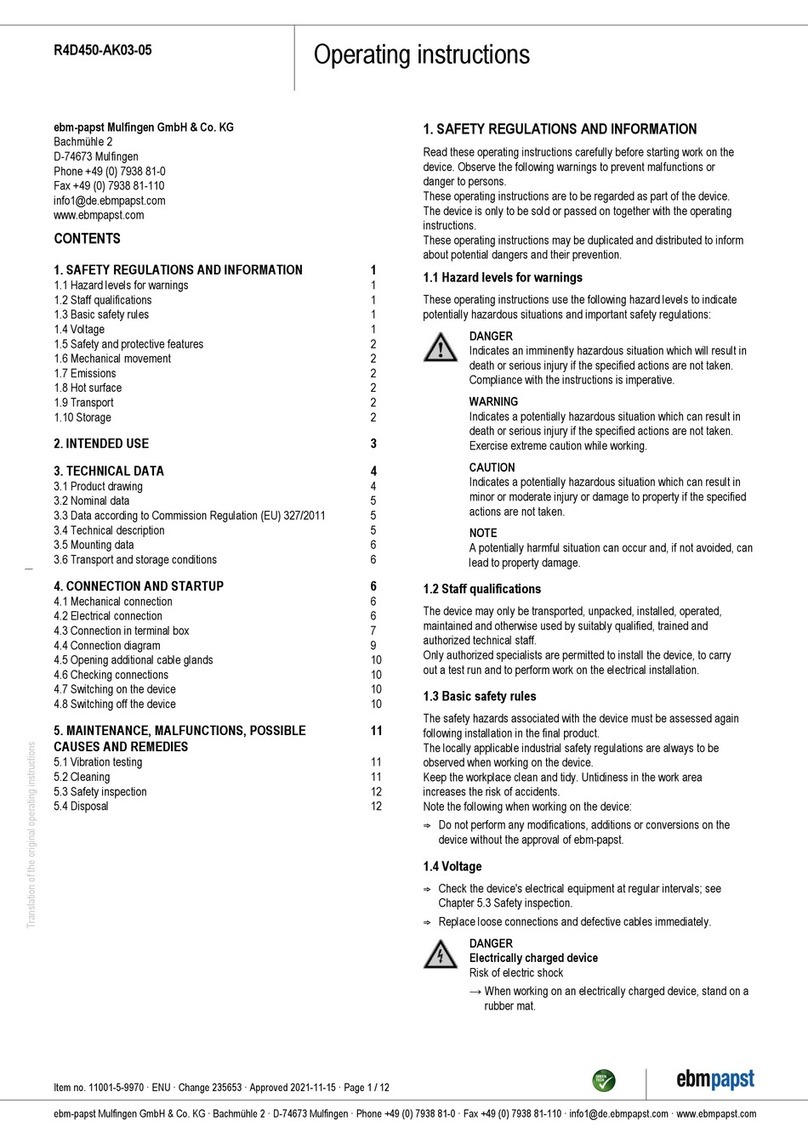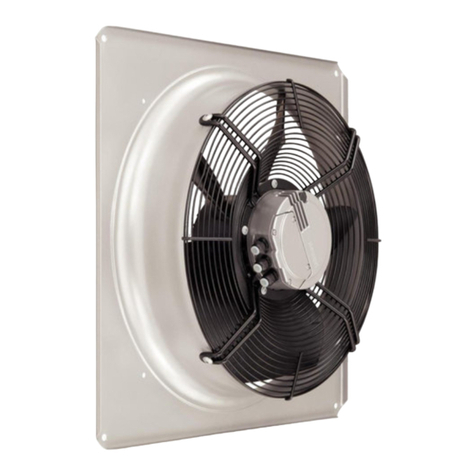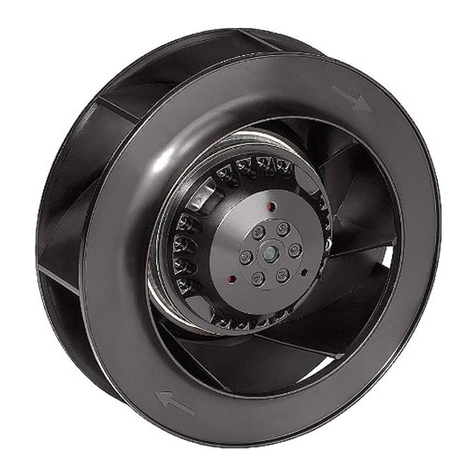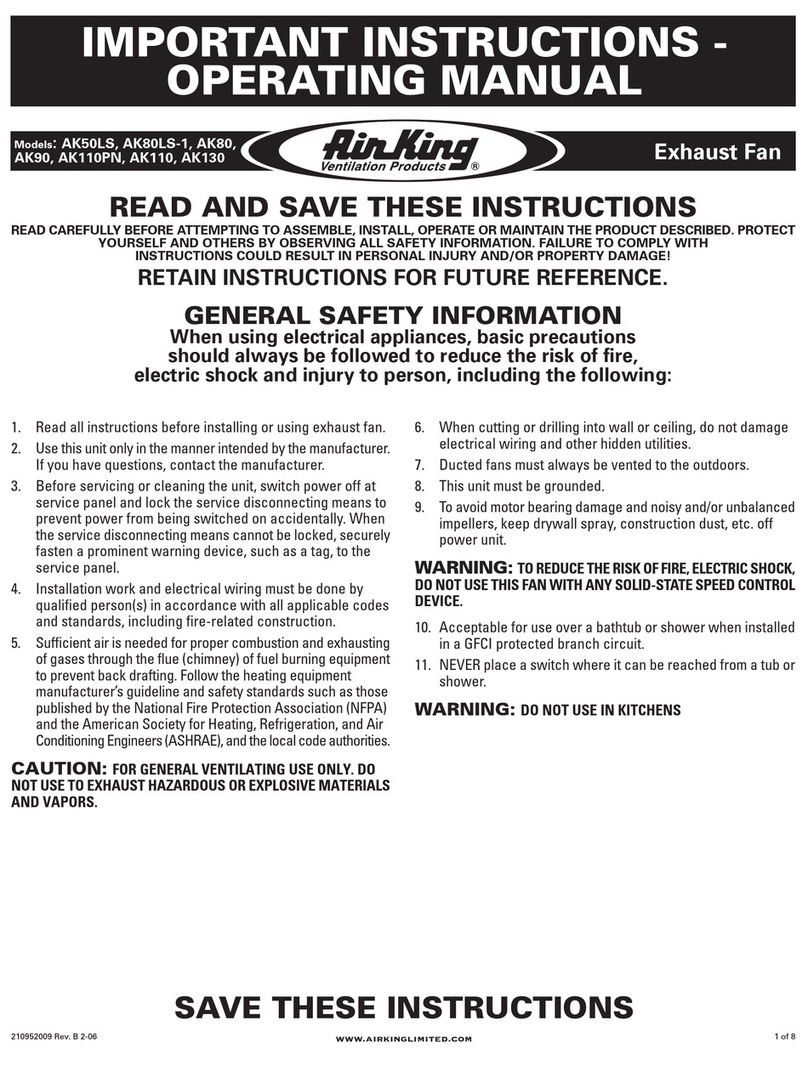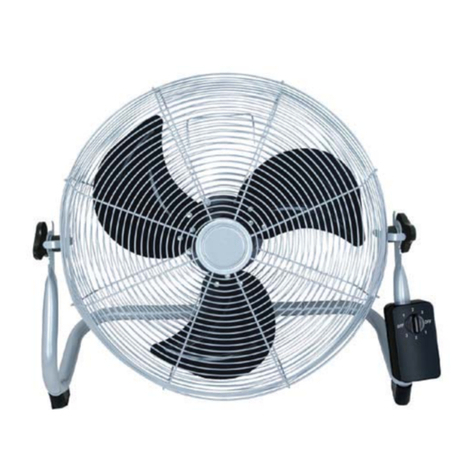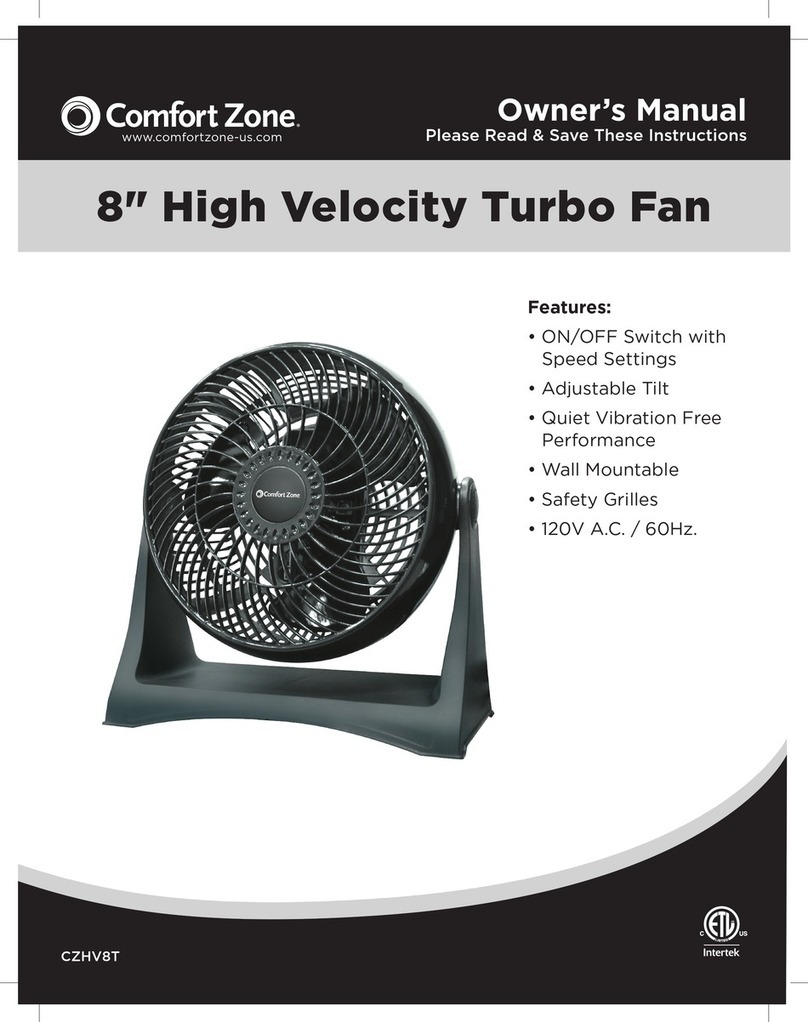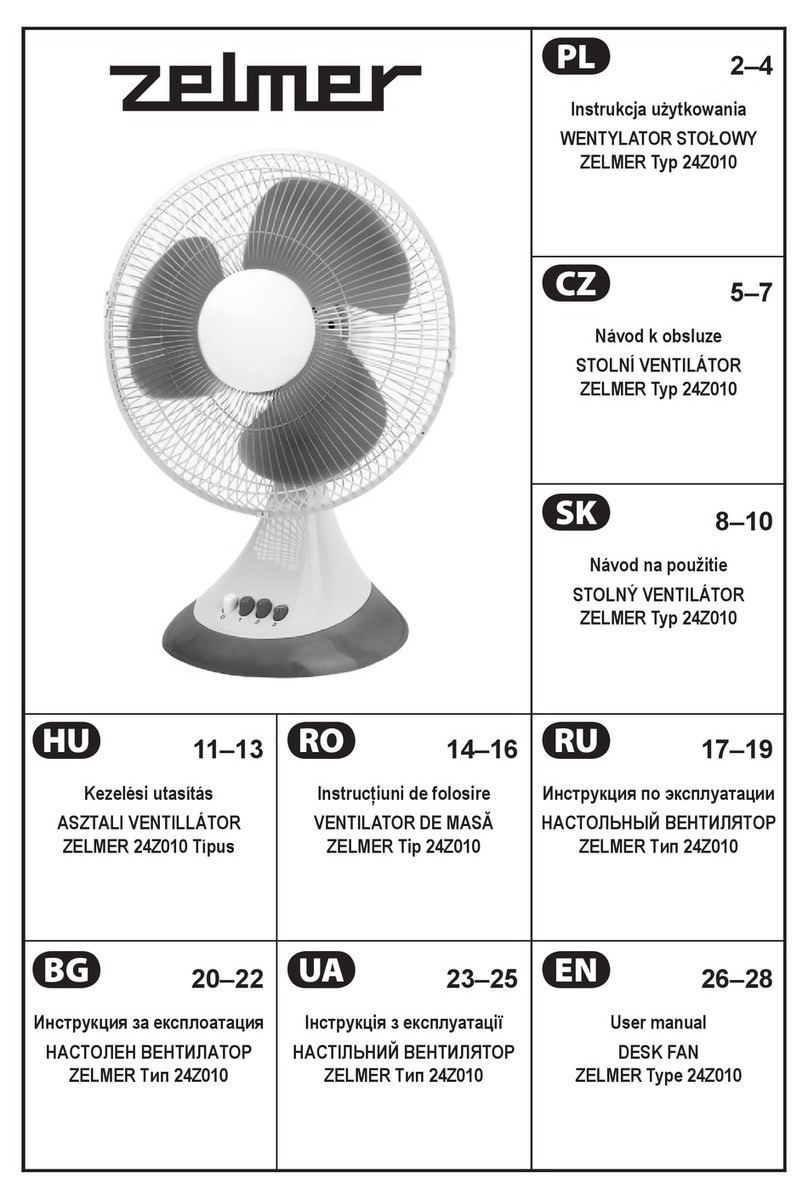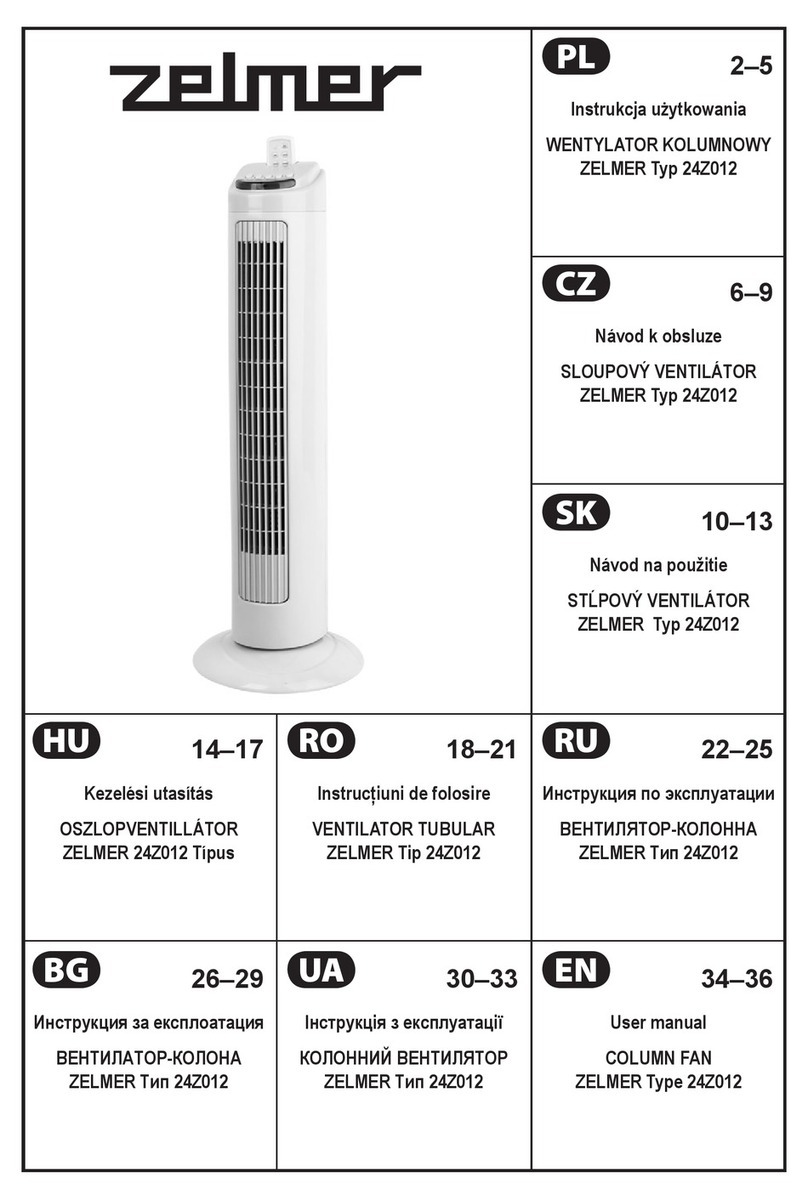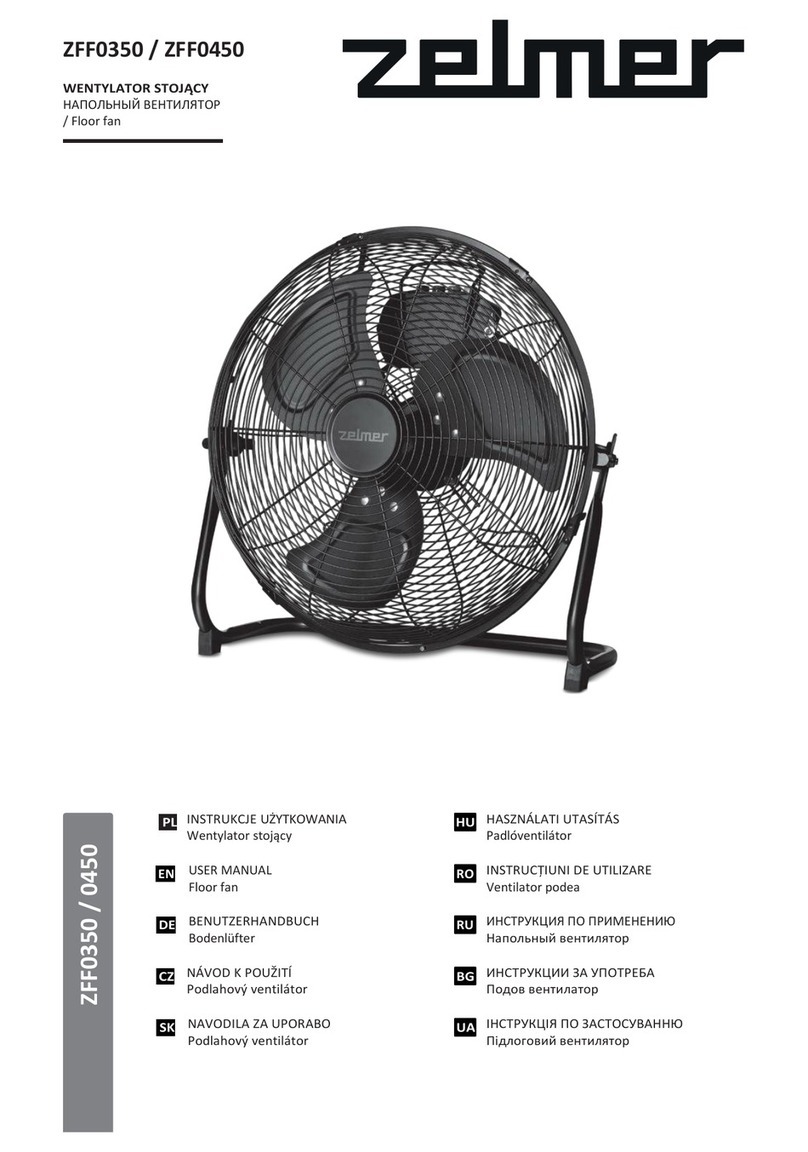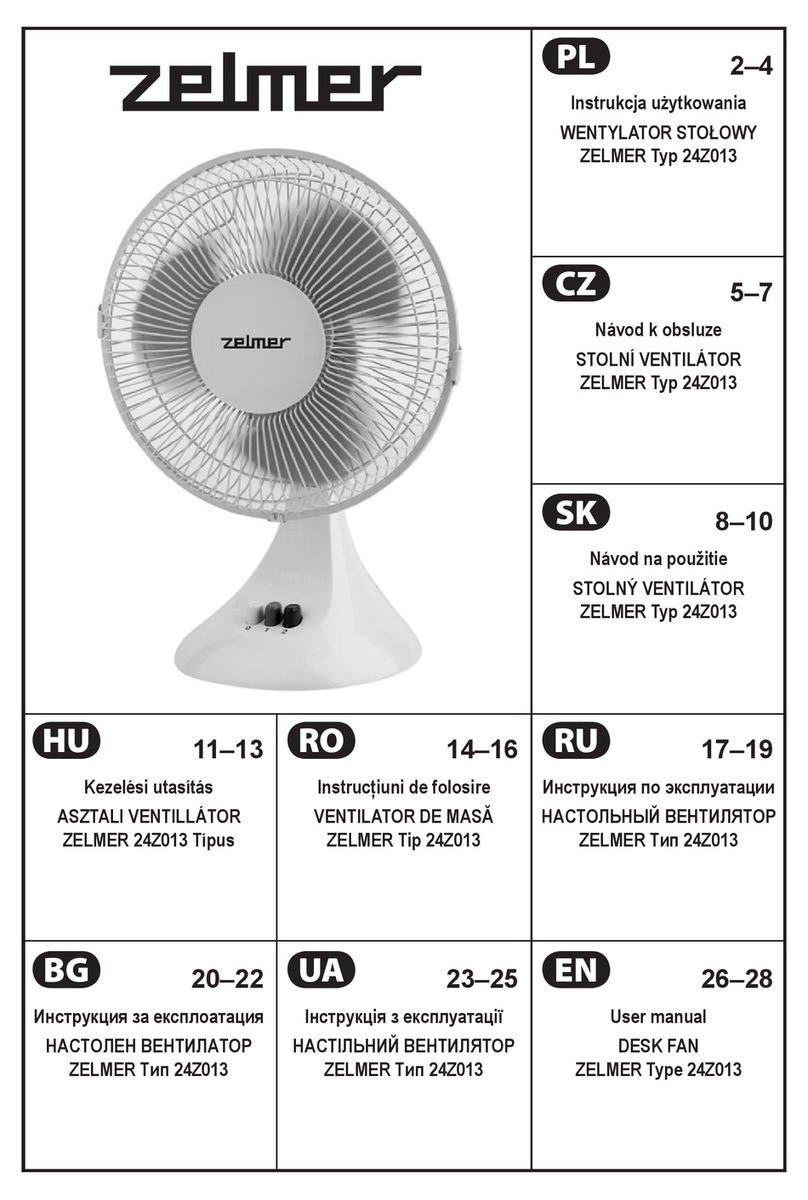Strombelastbarkeit darf nicht unter dem für das Gerät zulässigen Höchstwert liegen.
Prüfen Sie vor jeder Anwendung, ob sich das Gerät in einem gutem Zustand befindet und ob das
Netzkabel beschädigt ist: im Zweifelsfall kontaktieren sie einen professionellen, qualifizierten Techniker.
Die Hauptsteckdose muss leicht zugänglich sein, um das Gerät notfalls problemlos abzutrennen.
Stellen Sie das Gerät entfernt von folgenden Gegenständen auf:
- Wärmequellen (z. B. offene Flammen, Gasöfen usw.)
- Ablagerungen von Flüssigkeiten (z. B. Waschbecken usw.), um ein Herabfallen oder Spritzen von
Wasser zu vermeiden (Mindestabstand 2 Meter)
Stoffen (Vorhänge, usw.) oder flüchtigen Materialien, die das Lüftungsgitter bedecken könnten; prüfen
Sie zudem, ob die Vorderseite des Ventilators frei von flüchtigen Materialien (Staub, usw.) ist.
Die Auflagefläche muss stabil, flach und eben sein (damit das Gerät nicht umkippt).
MONTAGE
Warnung: Der Ventilator darf nur dann eingesetzt werden, wenn er komplett und ordnungsgemäß
montiert ist, d. h. komplett mit Sockel und Gitter.
Warnung: Trennen Sie das Gerät vor der Montage immer vom Strom. Im Zweifelsfall können Sie diesen
Vorgang durch einen qualifizierten Techniker prüfen oder durchführen lassen.
MONTAGE DES SOCKELS
Positionieren Sie die Säule auf dem Sockel und sichern Sie sie mit der Schraube „L“ mit
Unterlegscheibe, während Sie zeitgleich das Gegengewicht einrasten lassen.
Gewährleisten Sie, dass Säule, Sockel und Gegengewicht fest miteinander verbunden sind.
Lösen Sie den Höhenverstellring auf der Oberseite des Innenrohres. Ziehen Sie das Innenrohr aus dem
Außenrohr, um das Rohr auf die gewünschte Höhe einzustellen. Ziehen Sie dann den Ring fest.
Lösen Sie ggf. die Stellschraube durch Drehen nach links leicht. Schieben Sie den Schaltkasten
herunter über das Innenrohr und ziehen Sie die Stellschraube an. Vergewissern Sie sich, dass die
Stellschraube fest angezogen ist.
MONTAGE VON FLÜGELBLÄTTERN UND GITTER
Lösen Sie die Kunststoff-Montagemutter von der Vorderseite des Motorgehäuses, indem sie diese nach
links drehen.
Positionieren Sie das hintere Gitter mit dem Griff nach oben gegen die Vorderseite des Motorgehäuses,
damit die Fixierstifte am Motorgehäuse korrekt in die Löcher des hinteren Gitters einrasten.
Ziehen Sie die Befestigungsmutter des hinteren Gitters nach rechts fest. NICHT ÜBERMÄSSIG
ANZIEHEN.
Schieben Sie die Ventilatorflügel auf die Motorwelle, sodass der Schlitz auf der Rückseite der Flügel auf
dem Antriebsstift sitzt, der durch die Motorwelle verläuft.
Ziehen Sie die Flügelkappe fest, indem sie nach links drehen.
Um das Vordergitter zu befestigen, sollte das Hauptgerät auf eine glatte, ebene Fläche gestellt
werden. Befestigen Sie das Vordergitter mit dem Kunststoffring an dem hinteren Gitter (eine
Befestigungsschraube wird für die untere Seite empfohlen) und ziehen Sie die Schraube an.
Am Ende des Verfahrens ist zu prüfen, ob die Schutzgitter fest miteinander verbunden und am Motor
befestigt sind.
EINSATZ
Prüfen Sie vor jeder Anwendung, ob sich das Gerät in gutem Zustand befindet und das elektrische Kabel
nicht beschädigt ist. Falls das elektrische Kabel Schäden aufweist, muss es vom Hersteller oder dem
technischen Kundendienst oder ggf. von einem qualifizierten Techniker ersetzt werden, um Gefahren zu
verhindern.
17




















